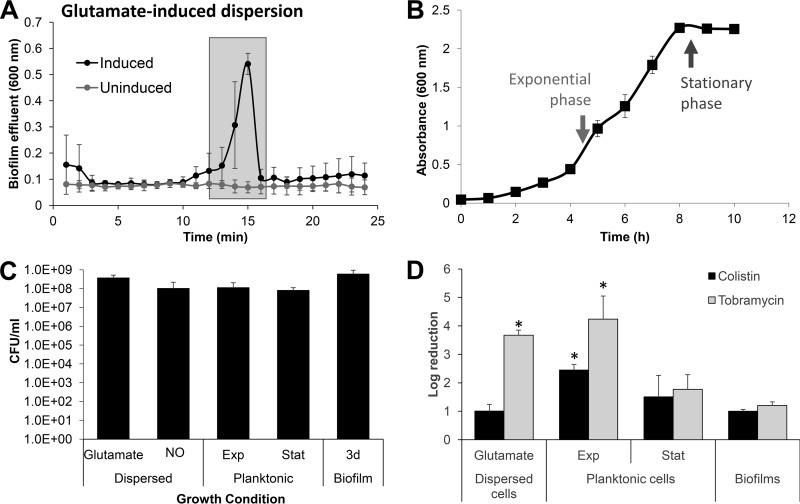FIG 1.
Susceptibility phenotype of dispersed cells obtained in response to exposure of P. aeruginosa PAO1 biofilms to glutamate. (A) Absorbance of biofilm tube reactor effluents after the induction of dispersion by glutamate. Cells that were collected for subsequent experiments and referred to as “glutamate induced” are indicated by shaded boxes. Effluents of untreated biofilms were used as control. (B) Growth curve of P. aeruginosa PAO1. Timing and average absorbance of cells referred to as “exponential-phase” and “stationary-phase” planktonic cells are indicated by arrows. (C) Average number of viable cells, expressed as CFU, present in biofilm cells, dispersed cells, and planktonic cells grown to exponential (Exp) and stationary phase (Stat) after washing and resuspension in fresh VBMM to an OD600 of 0.2. (D) Susceptibility of biofilm cells, glutamate-induced dispersed cells, and planktonic cells grown to exponential and stationary phases to tobramycin (50 μg/ml) or colistin (20 μg/ml) after exposure for 1 h at 37°C. Susceptibility was determined by log10 reduction in CFU. All experiments were repeated at least three times. Error bars indicate standard deviations. *, significantly different from PAO1 biofilms (P < 0.01 as determined by ANOVA and SigmaStat). Exp, exponential phase; Stat, stationary phase; 3d biofilm, 3-day-old biofilm.

